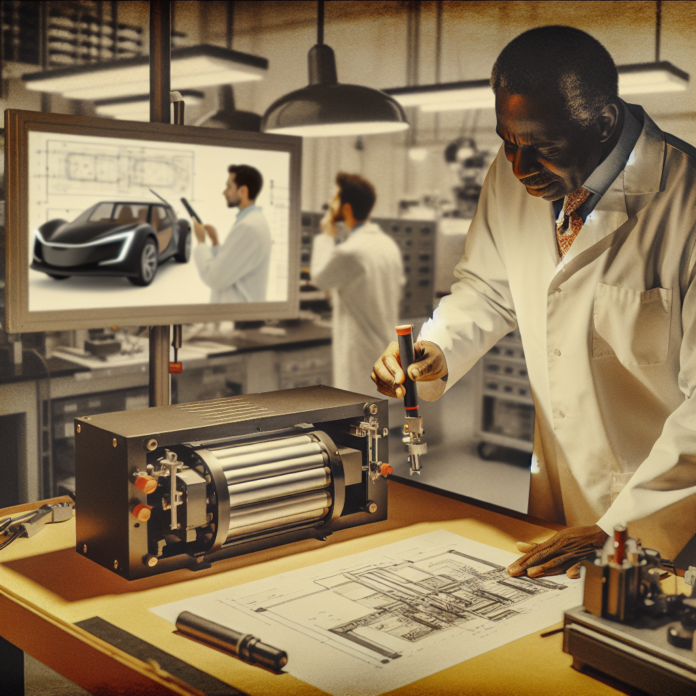Lonnie Johnson’s $15M Battery Bet: A Game-Changer for EVs
Electric vehicles (EVs) are the future of transportation, but their limited range remains a significant hurdle for mass adoption. However, Lonnie Johnson, the renowned inventor of the Super Soaker, is betting $15 million on a groundbreaking battery technology that could double EV range. This innovation has the potential to revolutionize the automotive industry and accelerate the transition to sustainable energy.
The Man Behind the Innovation: Lonnie Johnson
You might know Lonnie Johnson as the genius behind one of the best-selling toys in history, the Super Soaker. However, Johnson’s contributions extend far beyond toy aisles. With a background in aerospace engineering and years of experience at NASA’s Jet Propulsion Laboratory, he has always been at the forefront of technological breakthroughs.
His latest endeavor focuses on battery innovation, which could address one of the most persistent challenges in the EV industry—energy storage efficiency. By investing $15 million into cutting-edge battery technology, Johnson aims to redefine the capabilities of electric vehicles.
The Problem: EV Range Limitations
One of the biggest concerns for EV adoption is range anxiety. Despite advancements in battery technology, most electric cars still struggle to match the long-distance capabilities of traditional gasoline-powered vehicles. Current lithium-ion batteries, while efficient, have limitations in terms of energy density and charging speed.
Why EV Range Matters
For many consumers, the fear of running out of power mid-journey makes EVs a risky investment. Even with improved charging infrastructure, the time required to recharge an EV remains a major drawback compared to the convenience of refueling a gasoline car in minutes. If Johnson’s battery breakthrough delivers on its promise, it could make EVs significantly more attractive to consumers.
Lonnie Johnson’s Battery Breakthrough
Johnson’s research focuses on advanced solid-state battery technology. Unlike traditional lithium-ion batteries, solid-state batteries use solid electrolytes, which offer several advantages:
- Higher Energy Density: Solid-state batteries can store more energy per unit weight, which means EVs equipped with these batteries could travel twice as far on a single charge.
- Faster Charging Speeds: This new technology could drastically reduce charging times, making EVs more practical for long road trips.
- Improved Safety: Traditional lithium-ion batteries pose a risk of overheating and catching fire. Solid-state batteries significantly reduce this risk.
If Johnson’s battery technology lives up to its potential, we could see EVs that rival, or even surpass, gasoline-powered cars in terms of range, convenience, and affordability.
The $15M Investment and Its Impact
Investing $15 million into this revolutionary battery technology is no small feat. Johnson is betting big on the future of energy storage, and the implications go beyond just EVs. If successful, his innovation could transform multiple industries, including renewable energy storage, aerospace, and consumer electronics.
Potential Market Disruption
With major automakers investing billions into electric vehicle development, a breakthrough in battery efficiency could send shockwaves across the industry. Companies like Tesla, Ford, and General Motors have been working tirelessly to enhance battery technology, but a new player with game-changing innovation could reshape the competitive landscape.
Johnson’s investment could attract further funding from venture capitalists and tech firms eager to capitalize on the next big leap in EV batteries.
Challenges and Next Steps
While the potential of Johnson’s battery innovation is exciting, there are still challenges to overcome.
Scaling Production
Developing a new battery technology in a lab is one thing—scaling it for mass production is another. Manufacturing solid-state batteries efficiently and cost-effectively remains a major hurdle. To compete with existing lithium-ion batteries, Johnson’s technology must be viable at scale.
Regulatory Approval
Any new battery technology must pass rigorous safety and performance tests before it can be widely adopted. Regulatory bodies will need to evaluate the long-term viability and reliability of these batteries before they hit the market.
Industry Resistance
Established battery manufacturers and automakers might be reluctant to adopt new technology that requires significant retooling of their existing infrastructure. Overcoming industry skepticism and convincing large players to embrace this innovation will be a key challenge.
What This Means for the Future of EVs
If Johnson’s battery technology proves successful, it could usher in a new era for electric vehicles. Here’s what the future could look like:
- EVs with twice the range of current models, reducing the need for frequent charging.
- Faster adoption of sustainable transportation as range anxiety becomes a thing of the past.
- An increase in market competition, pushing existing companies to innovate faster.
Final Thoughts
Lonnie Johnson’s $15 million investment in battery technology is more than just a financial venture—it’s a bold step toward redefining the capabilities of electric vehicles. If successful, his innovation could break the biggest barrier to EV adoption and help accelerate the transition to a cleaner, more sustainable future.
The world is watching closely as Johnson works to bring his battery breakthrough to life. Will his latest invention change the trajectory of the EV industry as much as the Super Soaker changed summer vacations? Only time will tell—but the possibilities are electrifying.


